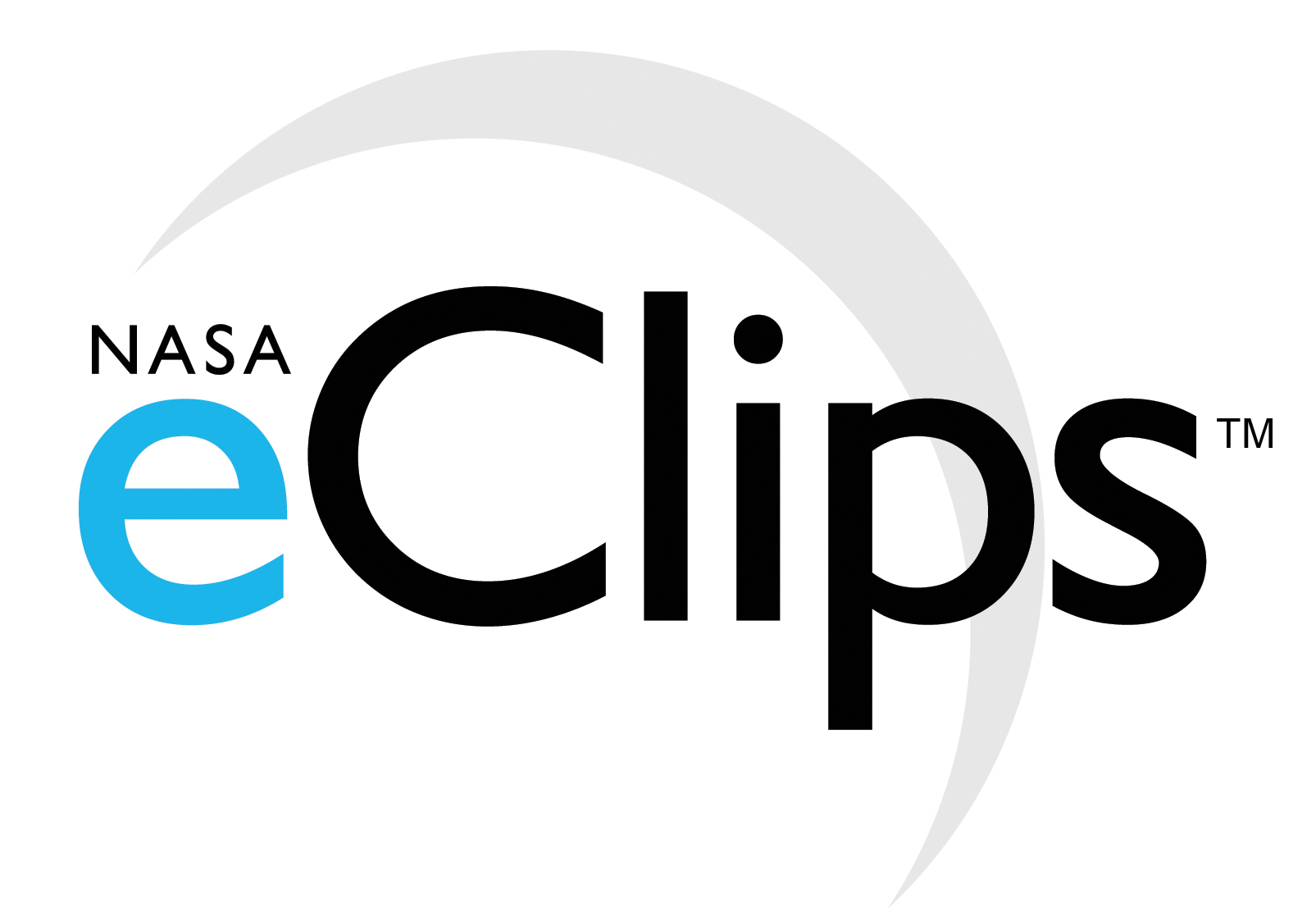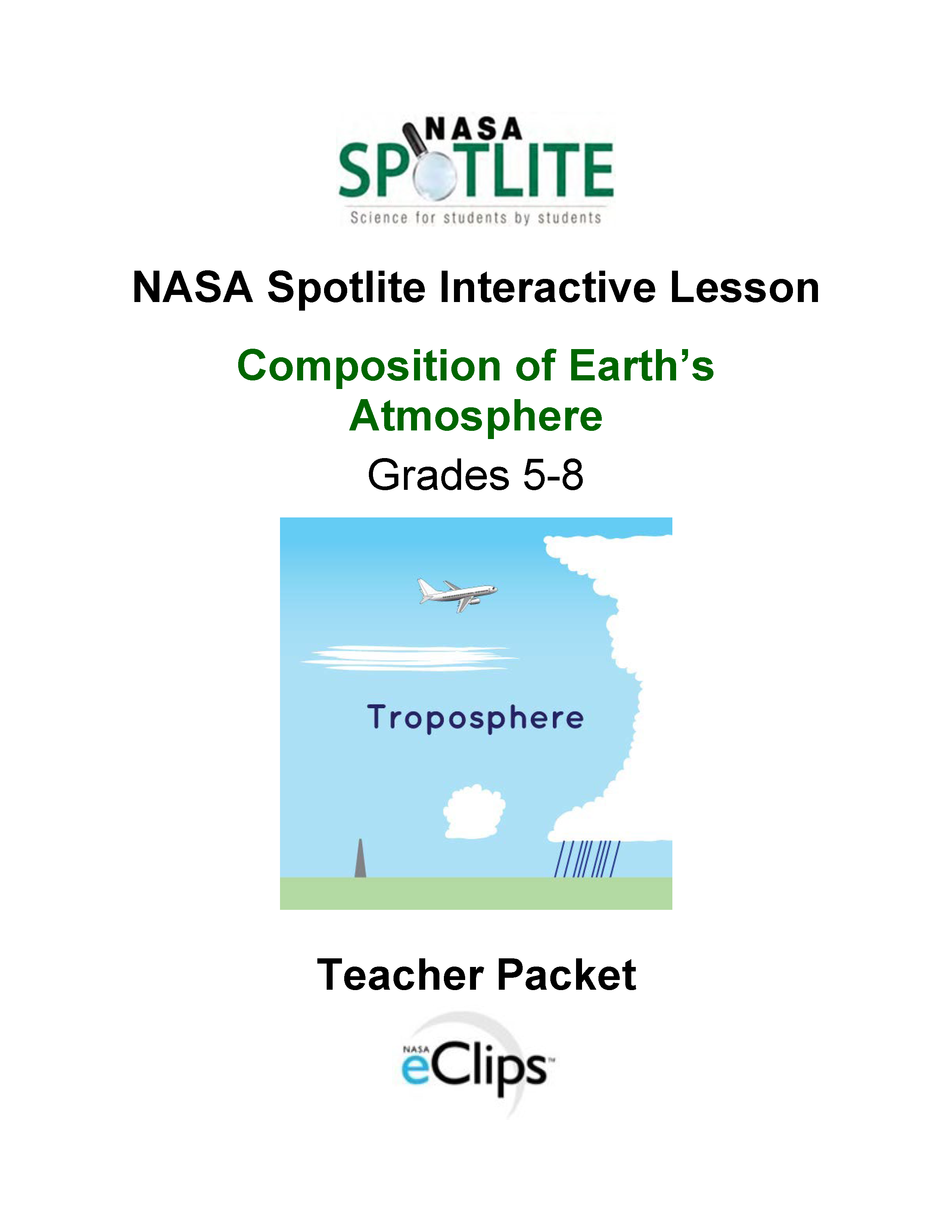NASA eClips™ Videos

Our World: Pluto - Our First Dwarf Planet
Find out how scientists now classify planets. See how NASA's robotic spacecraft, New Horizons, will help us learn more about the dwarf planet Pluto and similar objects in the Kuiper Belt.
Our World: What Is a Solar System?
Learn just what makes up a solar system and find out how we classify the thousands of objects in our own solar system. Since the production of this video New Horizons has reached, and is providing information on, the Kuiper Belt.
Our World: Moons In Our Solar System
Did you know astronomers have identified more than 300 moons in our solar system? How big is Ganymede? How small is Deimos? Which moons might have what it takes to support life? Follow the NASA missions to learn about these unique bodies in space.
Real World: Planetary Volcanoes
Thanks to NASA's missions, we know more about volcanoes in our solar system. Studying volcanoes can teach us about the interior properties of the planets and moons. Learn how the slope equation is used to identify how a volcano was formed.
Real World: Small Bodies Orbiting the Sun
Learn more about comets and asteroids and the role these play in our Solar System, as well as NASA's Rosetta and NEOWISE missions.
Real World: Close Encounters with an Asteroid
NASA sends a spacecraft to land on an asteroid, grab a piece of that asteroid, and then send that sample back to Earth to study. Learn more about all that NASA can learn about the formation of the Solar System from the close encounter of OSIRIS-REx with near-Earth asteroid Bennu.
Real World: Scaling the Solar System
Paul Chodas, Manager for NASA's Near Earth Object Program, explains Astronomical Units (AUs) and how this unit of measure helps simplify an understanding of distances within the solar system. To further simplify thinking about these vast distances, distances within the solar system are explained scaled to the size of a football field.
Real World: Limits of the Solar System
What defines the limits of the solar system? Where does the Oort Cloud fit within this defined space? Paul Chodas, from NASA's Near Earth Object Program, answers these questions and fills us in on some of NASA's missions and explorations that have helped shape our understanding of the solar system.
Real World: Comet Quest
NASA is using the information to help us understand why different planets are so different. Find out what a comet's diameter tells astronomers about the life of the comet. Learn about Comet Ison and the new Rosetta Mission.
Ask SME Close-up with a NASA Subject Matter Expert Career Connection Videos
Astrobiologist - Dr. Danny Glavin
In this close-up video, Dr. Danny Glavin, Astrobiologist at NASA's Goddard Space Flight Center, shares his journey in becoming a 'rock star' for NASA and how communication is an essential part of his job.
Mathematics
- NASA Educator Guide: Sizing up Pluto. K-5, 6-8
- SpaceMath@NASA Planet Fractions and Scales. K-5
- Rice Space Institute Planet Math. K-5
- SpaceMath@NASA Year of the Solar System Math Guide. K-5
- SpaceMath@NASA Cassini: Exploring the Moons of Saturn. K-5
- SpaceMath@NASA Exploring Jupiter with Juno. K-5
- SpaceMath@NASA Exploring Planetary Moons. K-5
Background Information
- NASA JPL What Is a Dwarf Planet? K-5, 6-8
- NASA Asteroids, Meteors, Comets, & Meteorites. 6-8
- NASA Overview: Pluto Moons. K-5, 6-8
- NASA Pluto. K-5
- NASA Our Solar System Lithograph Set. K-5, 6-8, 9-12
- NASA Solar System Exploration. K-5, 6-8, 9-12
- NASA 10 Things About Our Solar System's Most Marvelous Moons. K-5, 6-8
- American Museum of Natural History Space Volcanoes in 360. 6-8
- Geology.com Active Volcanoes of Our Solar System. 6-8
NASA Spotlite Videos
NASA Spotlite: Why is Mars Red?
Student producers from St. Margaret's Episcopal School confront the misconception that Mars is red because of its temperature. Learn how to collect evidence refuting this misconception.
NASA Spotlite: Composition of Earth's Atmosphere
Student producers from Arlington Public Schools will confront and correct the misconception that Earth’s atmosphere is primarily made of oxygen.
NASA Spotlite Design Challenge
Design Challenge
Teams are challenged to produce a video to improve scientific literacy. The goal of the video is to engage other students in doing activities that can help change their misconceptions about a topic in science.

Destination Mars
Join the NASA Spotlite Production Team!
Help others correct misconceptions about the color of Mars.

NASA Spotlite Interactive Lessons
Evidence of Chemical Change
In this lesson, students will address the common misconception that Mars is red because of its temperature. As students develop their understanding of chemical change in matter through explore activities, they will learn new vocabulary that applies to new concepts.

Composition of Earth's Atmosphere
In this lesson, students learn new vocabulary to develop their understanding of the composition of the atmosphere. They explore the common misconception that Earth’s atmosphere is primarily made of oxygen.

Partner and Other Resources

NASA Space Place's mission is to inspire and enrich upper-elementary-aged kids' learning of space and Earth science online through fun games, hands-on activities, informative articles and engaging short videos.
Online Interactives

In this interactive lesson by Infiniscope, learners will:
- Determine the relationship between distance from the Sun and condensation temperature in the early Solar System.
- Apply the relationship between distance from the Sun and condensation temperature to determine the composition of planets at a variety of distances from the Sun.
- NASA Exploring Planetary Moons. K-5, 6-8
- NASA Eyes on the Solar System. K-5
- NASA JPL Lava Layering: Making and Mapping a Volcano. 6-8
- NASA JPL Make a Volcano. 6-8
- NASA Space Place Space Volcano Explorer. 6-8
- PBS Learning Media Volcanoes. 6-8
- NASA In Depth: Pluto. K-5, 6-8
- NASA NASA Eyes -- Solar System Exploration. K-5
- NASA Solar System Exploration Interactives. K-5
- NASA Goddard Space Flight Center The Scale of Things. K-5, 6-8
- NASA Space Place Solar System. K-5, 6-8
- NISE Network Exploring the Solar System: Pocket Solar System. K-5
